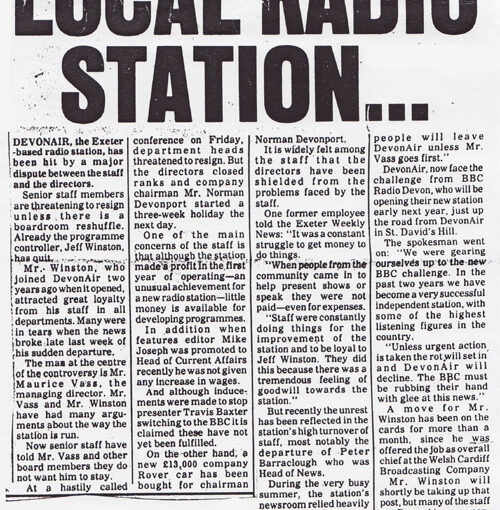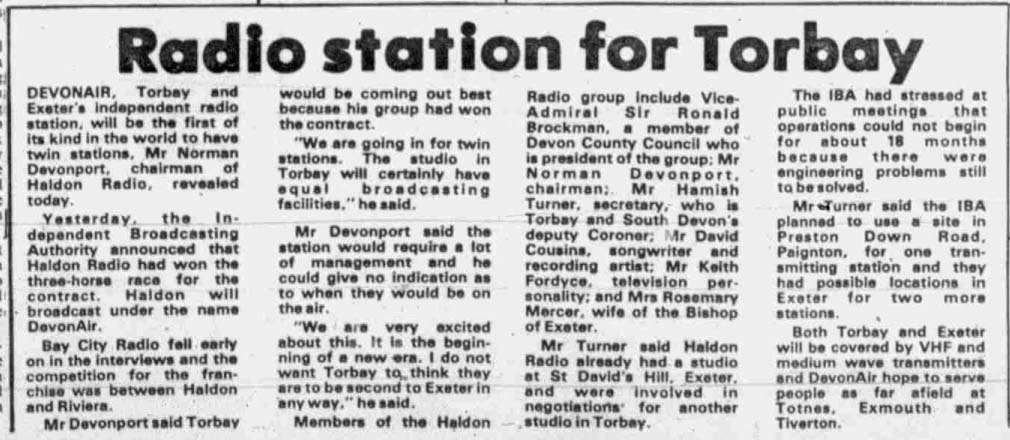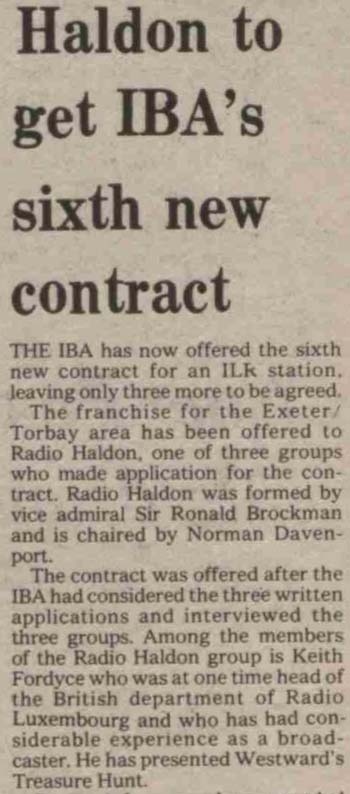In May 1993 the UK broadcast regulator, then The Radio Authority, re-advertised the radio contract for the Exeter and Torbay areas.
Applications were received from four groups (including the incumbent, DevonAir Radio).
Guidelines for applicants stipulated that copies should also be deposited at public libraries in the transmission area for public scrutiny.
Read them here.




